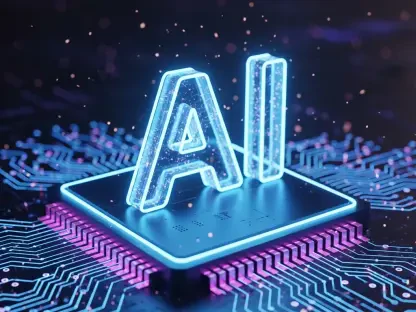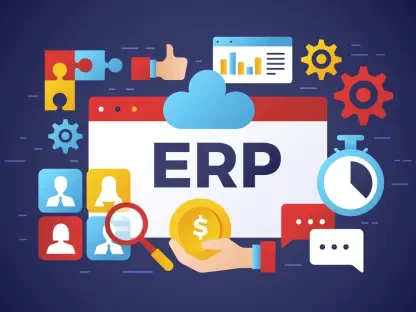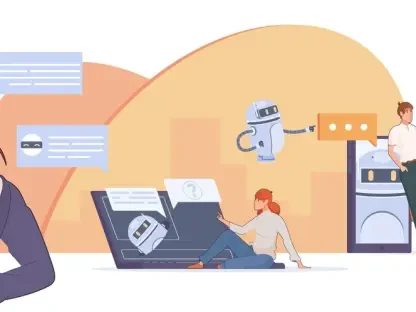Imagine a simple chatbot transforming into a personal tutor, guiding students through the toughest subjects with patience and precision, helping a high schooler struggling with calculus not just get the answer but unravel the logic behind each step through interactive visuals and tailored explanations. This isn’t a distant dream but a reality introduced by Google with its latest innovation, Guided Learning, on the Gemini platform. Launched in time for the current academic year in 2025, this feature aims to redefine how technology intersects with education, turning passive reliance on AI into active, meaningful learning.
The Urgency of AI as a Classroom Ally
The integration of artificial intelligence into education has sparked both excitement and concern among educators and parents alike. With studies showing that over 60% of students have used AI tools for homework help in recent surveys by EdTech Review, there’s a growing fear that quick answers undermine critical thinking. Google’s response with Guided Learning signals a pivotal shift, addressing these apprehensions by prioritizing comprehension over convenience. This isn’t merely a tech update; it’s a recognition of the need to evolve AI from a shortcut provider to a supportive mentor in academic settings.
This development comes at a crucial time when digital tools are ubiquitous in classrooms worldwide. The challenge lies in ensuring that technology fosters skill-building rather than dependency. By introducing features that encourage students to ask deeper questions and engage with material interactively, Google is stepping up to meet a pressing demand for responsible AI integration in learning environments, setting a precedent for others in the industry.
What Sets Guided Learning Apart?
Guided Learning on Gemini isn’t just another chatbot tweak; it’s a comprehensive reimagining of AI as an educational tool. Unlike traditional answer-focused bots, this feature breaks down complex topics into manageable steps, adapting explanations to match individual learning paces. Whether it’s a math equation or a historical analysis, Gemini ensures users grasp the “why” and “how” through a structured, supportive process.
Beyond text-based guidance, the platform incorporates multimedia elements like diagrams, videos, and interactive quizzes to enrich understanding. A standout aspect is its personalization—tools such as auto-generated flashcards and study guides are crafted from quiz results or uploaded class notes, catering to specific needs. Additionally, Google’s initiative to offer a free one-year subscription to the AI Pro plan in select countries, including the U.S. and Japan, grants access to advanced features like NotebookLM, amplifying the tool’s reach and impact.
What makes this truly unique is its versatility. From exam preparation to personal projects like learning guitar techniques, Guided Learning acts as a thinking partner across diverse pursuits. Enhanced by embedded visual aids and YouTube content in responses, Gemini positions itself as a dynamic hub for education, bridging academic and personal growth seamlessly.
Voices Echoing Change in Education
Feedback from early adopters of Guided Learning underscores its potential to reshape AI’s role in learning spaces. A high school educator from California remarked, “This tool has changed how my students approach problem-solving—they’re no longer just seeking answers but engaging with the process through Gemini’s prompts.” Such testimonials highlight a shift from passive consumption to active participation, a core goal of this innovation.
Industry experts are equally optimistic about the broader implications. A recent analysis by a leading tech journal praised the platform, stating, “Google’s focus on step-by-step guidance could redefine standards for educational AI, pushing competitors to follow suit.” This sentiment aligns with Google’s stated mission to foster critical thinking, suggesting that Guided Learning resonates with both users and thought leaders in the field.
Students, too, have noted tangible benefits. A college freshman shared, “I used Gemini to break down organic chemistry concepts, and the visual aids made all the difference—I finally understood reaction mechanisms.” These firsthand accounts paint a picture of a tool that not only supports but also inspires learners to dive deeper into their studies.
Practical Ways to Leverage Guided Learning
Integrating Guided Learning into daily study routines can unlock its full potential for users at any level. Begin by tackling challenging subjects—upload difficult material or pose specific questions, allowing Gemini to deconstruct concepts into smaller, digestible parts with multimedia support. This method ensures a solid foundation before moving to advanced topics.
Another effective strategy is to engage with the platform’s interactive quizzes to assess comprehension. Based on results, users can request tailored study guides or flashcards for targeted review, reinforcing weak areas efficiently. For those in eligible regions, tapping into the free AI Pro plan subscription offers access to cutting-edge tools like Deep Research, ideal for in-depth exploration of subjects.
Don’t limit this tool to academics alone; apply it to personal interests or hobbies. Whether mastering coding or exploring creative writing, request structured guidance to build skills systematically. By viewing Gemini as a collaborative partner rather than a quick-fix solution, learners can cultivate stronger analytical abilities and a richer understanding across varied domains.
A Step Forward in AI-Driven Learning
Looking back, Google’s introduction of Guided Learning marked a defining moment in the evolution of AI within educational spheres. It tackled head-on the concerns that technology might erode critical thinking by offering a platform that emphasized process over product. The blend of personalized support, interactive elements, and broadened access through strategic subscriptions reflected a thoughtful approach to modern learning challenges.
As this initiative unfolded, it became clear that the industry was at a turning point, with parallel efforts like OpenAI’s Study Mode echoing a shared commitment to educational integrity. For students and educators moving forward, the next step was to embrace these tools actively—experiment with their features, integrate them into diverse learning scenarios, and advocate for their responsible use in schools. This journey promised to shape a future where AI stands as a true ally, empowering learners to navigate complexity with confidence and curiosity.









